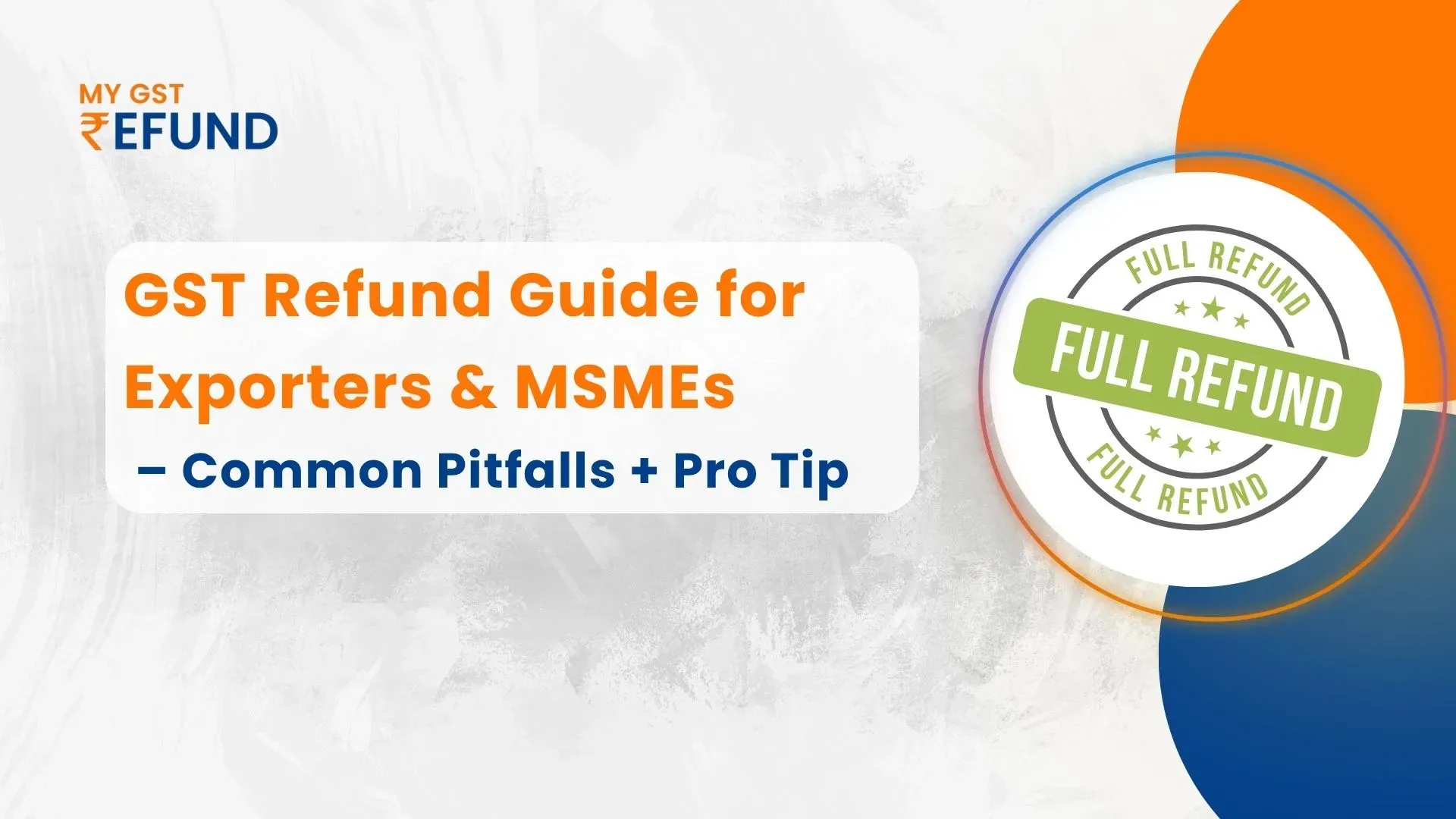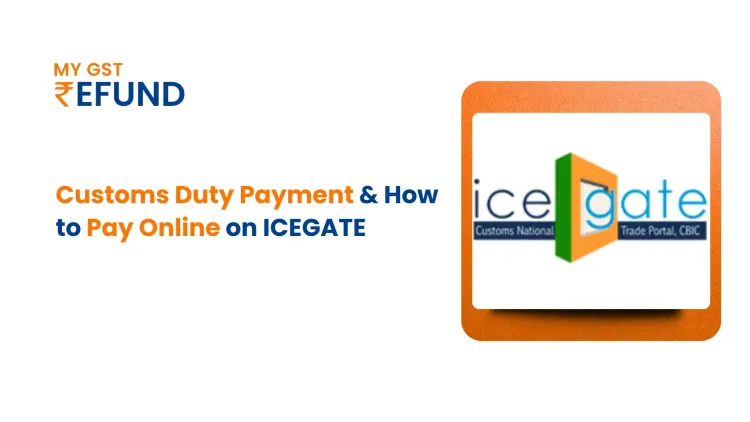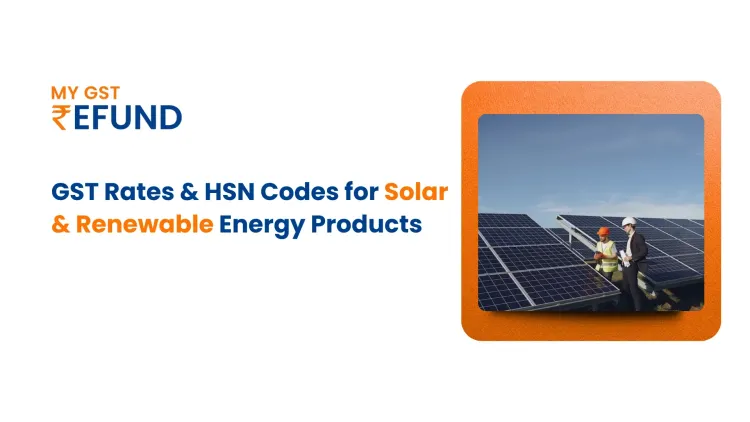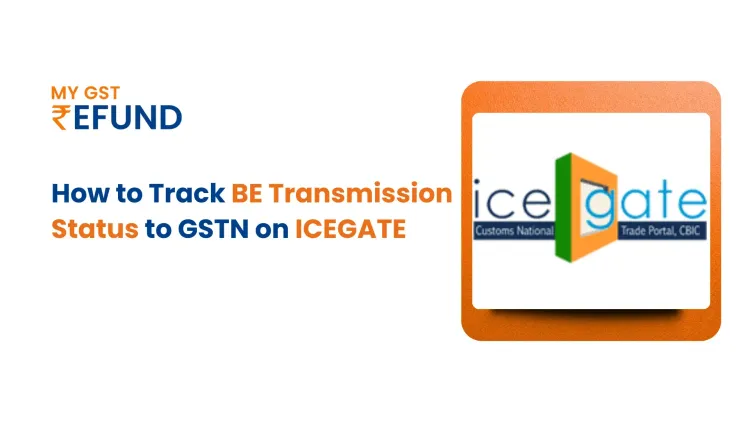Advanced GST Refund Pitfalls & Pro Tips
GST refunds play an imperative role in offering incentives to exporters, suppliers in Special Economic Zones (SEZs), and other Micro, Small, and Medium Enterprises (MSMEs) by attracting excess tax levies and unused Input Tax Credit (ITC). Despite this, many businesses find themselves stuck or refused as a result of GST refunds, usually because of gaps in documentation, reconciliation mistakes, or late filing, things that can easily be avoided.
Top 5 Pitfalls That Delay Your GST Refund
1. Incomplete Documentation or Mismatch Issues
One of the most common reasons for refund rejection is incomplete documentation. The GST officer may issue a GST refund deficiency memo (RFD‑03) if supporting invoices, shipping bills, or payment proofs are missing or inconsistent.
Common triggers: GSTR-1 reflects an invoice, the item has no shipping bill, or payment has not been received.
In case of issuance of GST refund RFD-03, the application would be counted as rejected, and a new RFD-01 would have to be refilled, wasting time and money, besides a chance of more inspection.
2. GSTR-1 vs Export Documents Mismatches
Exporters often face rejection due to inconsistencies between GSTR-1 returns and shipping documentation.
Even if your exports are zero-rated under LUT/IGST, discrepancies like incorrect port codes, HSN mismatches, or invoice number formatting differences may trigger rejections.
Always cross-verify before filing to avoid GST refund mismatches in export documents.
3. Incorrect Bank or IFSC Details
A minor mistake in your bank details or IFSC code can result in refunds being marked as “pending” indefinitely.
In many MSME cases, bank detail errors surface only after months of inactivity and require separate grievance redressal.
Make sure to verify your GST refund pending due to wrong bank details and pre-validate them with your jurisdiction officer or the GST portal.
4. Late Filing or Expired Refund Window
The GST refunds must be submitted within 2 years of the relevant date. Many businesses miss this timeline due to poor documentation or internal delays.
The GST refund time limit of 2 years is strictly enforced. Once missed, there's no recourse through RFD-01.
Fast-track claims by adhering to the GST refund 60-day timeline—this is the maximum period allowed for refund disbursal post-filing (as per Rule 91/92), beyond which interest becomes applicable.
5. Wrong Refund Category Selected
This often-overlooked mistake leads to outright rejections. For example, selecting “Refund of Excess Cash” instead of “Refund of ITC on Exports Without Payment” will result in a mismatch and system-level rejection.
Be extra cautious in selecting the right refund category under RFD-01. Incorrect category selection often requires a fresh filing, with no timeline carryover.
Pro Tips to Fast-Track Your Refund
1. Respond to RFD‑03 Within 15 Days
Once an RFD‑03 is issued, you must respond within 15 calendar days.
Failing to do so will automatically reject the application.Avoid rejection. Refer to our detailed guide on [How to reply to RFD‑03 GST] for pre-approved formats and expert suggestions.
2. Reconcile GSTR-1/GSTR-3B before filing
The GSTR-1 data has to be equal to the GSTR-3B, as per the invoice-wise, to check the validity of turnover, ITC claims, and export value.Either with reconciliation packages or with monthly checks, take action to avoid future problems. This is one of the mistakes often made by novice exporters.
3. Use Pre-Application Steps and Checksum Validation
Digitally sign documents such as LUT, BRC/e-BRC, and invoices before the filing of RFD-01, as digital copies should be readable by the system.The facility of checksum verification and file format checks raises the acceptance rates by helping to detect a problem before submission.
4. Pre-Verify Bank and IFSC Details
Bank accounts may even be delinked or rejected by the NPCI even after execution.
Verify bank validation using the pre-login tracking of the application status.
In case of discrepancy of bank details, update the bank details with a non-core modification in the GST registration.5. Track the Refund Schedule
RFD-01 through RFD-06 (order) should ideally take 60 days in terms of the time the process of refund takes. One should not wait till the last minute; GSTN does not permit retrospective claims with a duration of more than 2 years.
Put calendar reminders to remember the deadlines so that you will be eligible for the GST refund 60-day timeline.
Tools & Templates to Simplify the Process
- GST Refund Calculator Online
Use MyGSTrefund’s embedded GST Refund Calculator to check your eligible ITC based on GSTR filings and shipping data. - Sample RFD‑03 Response Template
Save time with a ready-to-use GST refund memo response template. Pre-drafted with placeholders, it's perfect for timely replies. - GST Refund Process Flowchart
Follow MyGSTRefund’s downloadable process chart from RFD‑01 (Application) to RFD‑06 (Refund Sanction Order). Understand the linkages across RFD‑02 (Acknowledgment), RFD‑03 (Deficiency Memo), RFD‑05 (Payment Order), and the timelines involved.
Special Use Cases:
Exporters: Match GST Invoices with Shipping Bills
Exporters need to make sure that their shipping bills, HSN codes, and invoice values match up in both GSTR-1 and ICEGATE.
Inverted Duty Structure Refunds
Refund claims arising from an inverted duty structure must be submitted using FORM GST RFD-01, either for a single tax period or by clubbing multiple periods. However, taxpayers with an aggregate annual turnover up to ₹1.5 crore (in the preceding or current financial year) who opt to file GSTR-1 quarterly must file refund claims quarterly or by clubbing quarters.
The following conditions must be met before applying:
- Form GSTR-1 must be filed for the applicable tax period.
- A valid GSTR-3B return must be filed for the preceding tax period.
- Circular No. 125/44/2019-GST is an amendment to Circular No. 79/53/2018-GST, and despite that, several principles stated in the latter circular are still applicable regarding inverted duty refund.
- In particular, Section 54 (3) of the CGST Act, 2017 grants a refund of unused ITC on condition that the output tax has been fully paid in terms of such tax and has an overhang of ITC.
- With platforms like MyGSTRefund, automated checks, and smart validations specific to GST refunds, inverted duty tips allow MSMEs to file most of the forms clearly and document compliance to get the refund quickly and error-free.
To file quickly and error-free, an automated check and intelligent validations specific to GST refund inverted duty tips on platforms such as MyGSTRefund can help MSMEs file with clarity and meet refund compliance standards.
The following conditions must be met before applying:
- Form GSTR-1 must be filed for the applicable tax period.
- A valid GSTR-3B return must be filed for the preceding tax period.
- Circular No. 125/44/2019-GST is an amendment to Circular No. 79/53/2018-GST, and despite that, several principles stated in the latter circular are still applicable regarding inverted duty refund.
- In particular, Section 54 (3) of the CGST Act, 2017 grants a refund of unused ITC on condition that the output tax has been fully paid in terms of such tax and has an overhang of ITC.
- With platforms like MyGSTRefund, automated refund checks, and inverted duty tips, MSMEs can file most of the forms clearly and document compliance to get the refund quickly and error-free.
To file quickly and error-free, an automated check and intelligent validations specific to GST refund inverted duty tips on platforms such as MyGSTRefund can help MSMEs file with clarity and meet refund compliance standards.
How MyGSTRefund is Streamlining Exporters' GST Refunds
MyGSTRefund is an automated platform developed to streamline GST refund claims for Indian exporters.
It has already earned the trust of 5,000++ users, processed ₹50 Cr+ in refunds, and is relied on by 500+ startup founders.
- 100% Free Refund Check
- Takes just 30 seconds
- You can check your eligibility instantly, as no paperwork is required.
- To claim your GST refund, just enter your basic details, as it only takes 30 seconds to get started!
MSMEs: Fix Bank Errors Early
Many MSMEs face refund rejections due to common pitfalls like outdated IFSC codes, inactive bank accounts, or mismatched PANs linked to multiple accounts. These errors often go unnoticed until the refund is stuck. To prevent this, ensure your bank details are updated and validated well before filing.
Document GST Refund Checklist: 7 Key Steps
- GSTR-1 and GSTR-3B reconciliation
- Pre-validate invoices and e-BRC
- Select the correct refund category
- Verify bank & IFSC details
- File RFD‑01 within the time limit
- Respond to RFD‑03 in 15 days
- Track the application using ARN
Frequently Asked Questions
1. How do I get my GST refund back?
Step 1: Log in to the GST portal, go to the 'Services' tab, click on 'Refunds,' and select the 'Refund pre-application form' option.
Step 2: On the page displayed called 'Refund pre-application form,' fill in the details asked for, and click on 'Submit.' A confirmation of submission will be displayed on the screen
2. What services are offered by MyGST Refund?
MyGST Refund offers end-to-end GST refund automation, e-BRC matching, export documentation checks, refund filing, deficiency memo handling, and smart credit tracking tailored for exporters and MSMEs.
3. Where to claim the GST refund?
GST refunds can be claimed through the official GST portal by filing Form RFD-01 under the “Refund” section.
4. What is the amount of the GST refund?
This amount of refund is found out based on your Input Tax Credit (ITC) and export turnover, as well as the type of refund you are intending to claim (zero-rated, inverted duty, etc.). To estimate the amount of refund to which you are entitled, refer to the GST Refund Calculator.
5. What is the process of checking a refund?
The status of your cash refund is available on the GST portal in the following way: Services > Refunds > Track Application Status using ARN (Acknowledgement Reference Number).
Related Posts







